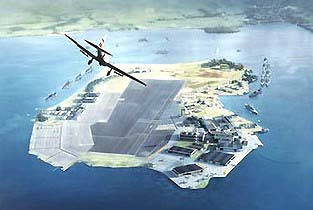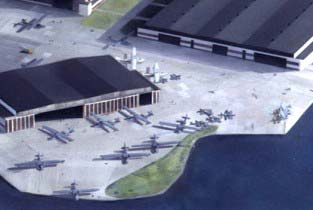 ........... ...........
1941, A view painting by Blair Art Studios, a great place to obtain paintings, notice detail of hanger areas. |
 ........... ...........
1941, A view painting by Blair Art Studios, a great place to obtain paintings, notice detail of hanger areas. |
| With
completion
of the 4,672-foot long Admiral Clarey Bridge in 1998, the island became
accessible to visitors and potential development. Later that year, the
decommissioned USS Missouri was berthed on Ford Island, and in 1999
officially
opened as a memorial and museum, honoring sailors and marines who
fought
for our country during time of war. These significant milestones
contribute
to the Navy's vision of developing Ford Island to centralize operations
in the Pearl Harbor area for overall efficiency, modernize facilities
and
reduce maintenance costs and congestion on the Pearl Harbor base.
Go to: Hawaii Page |